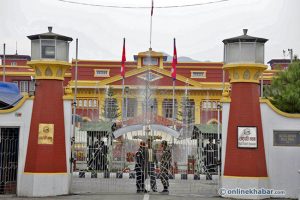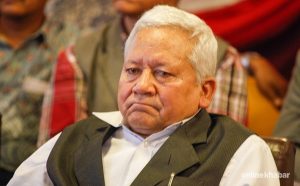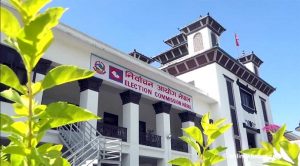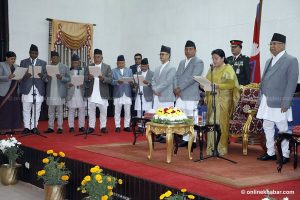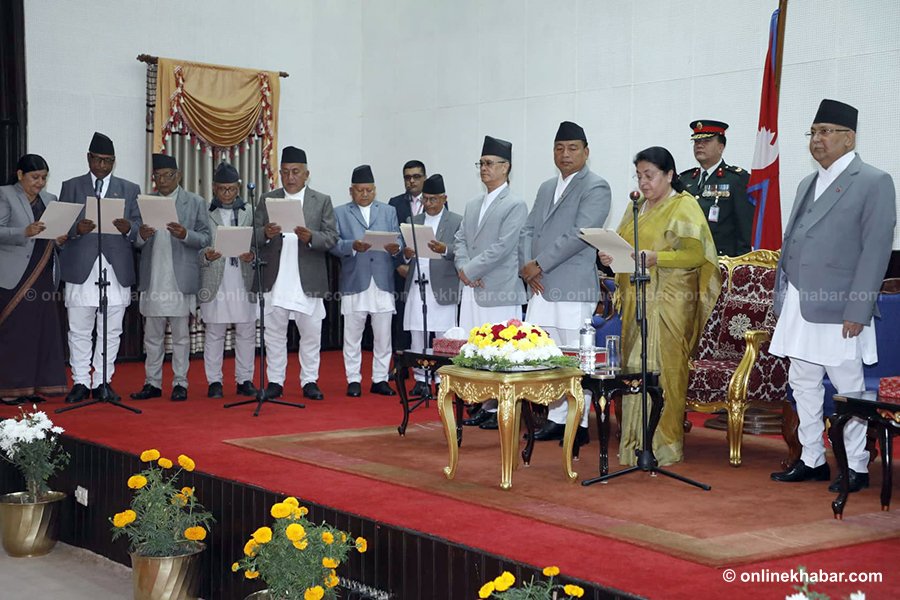
Kathmandu, November 5
A day after President Bidya Devi Bhandari sacked incumbent governors of all seven provinces, the head of the state made the new appointments on Monday. Bhandari endorsed the names as recommended by the Cabinet yesterday and swore them in on Tuesday.
Prime Minister KP Sharma Oli’s Nepal Communist Party’s secretariat meeting had discussed possible names and selected the seven to forward to the government. The party has selected its veteran leaders and cadres for top provincial positions. However, the Oli administration has come under fire about the names, from both inside and outside the party.
Madhav Kumar Nepal-led faction of the party has decried the appointments as his nominees could not make it. On the other hand, other parties said Oli made the prestigious position a platform for his cadres.
Here is a brief bio of each of seven governors who will work as the federal government’s representatives to the provinces.
1.
Som Nath Adhikari ‘Pyasi’: Province 1
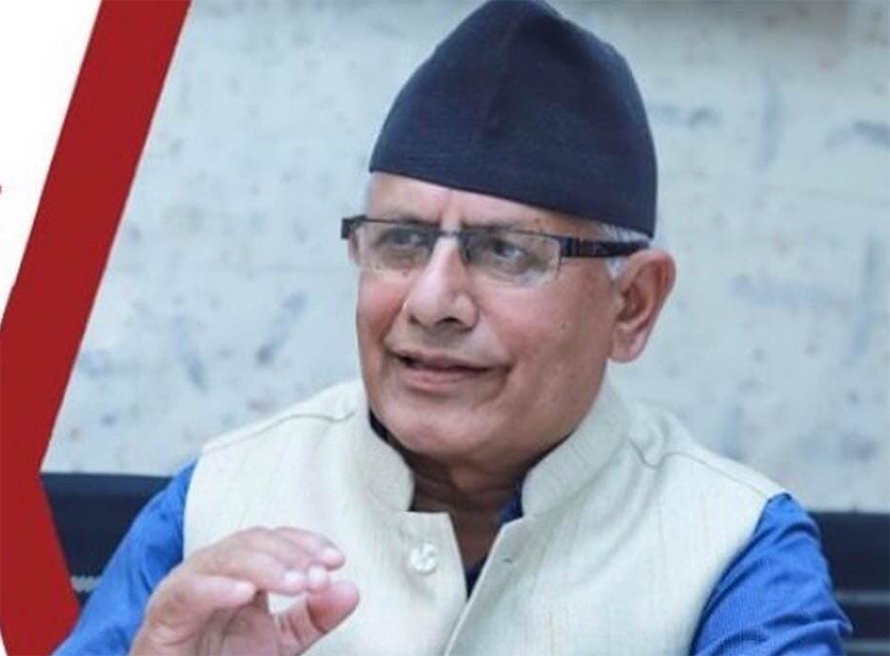
A native of Kaski district in Gandaki province, Adhikari is a former lawmaker representing the then CPN-UML. During the partyless Panchayat system before 1990, the then CPN-ML had fielded him in an election to the National Panchayat. Inside the ‘partyless’ legislature, Adhikari was sent to raise voices against the system. After the restoration of the multiparty system in 1990, Adhikari was elected a House of Representatives member. Of late, he was an invitee to the NCP standing committee.
2.
Tilak Pariyar: Province 2
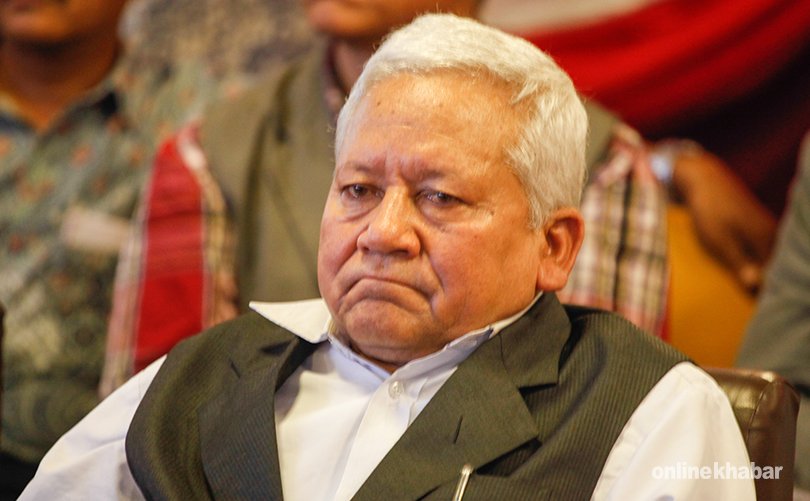
This Dalit leader, born in Liwang of Rolpa of Province 5, began his political career from India during his undergraduate years. In the early 1990s, Pariyar joined the Maoists’ armed struggle against the monarchy as ‘Himmat’. After the Maoist party joined the peace process, he was elected a lawmaker twice. However, he left the party along with Mohan Baidya in 2012, only to come back to the Pushpa Kamal Dahal-led party along with Ram Bahadur Thapa ‘Badal’. Between his departure from the party and comeback, Pariyar even joined the Netra Bikram Chand ‘Biplav’-led party briefly.
3.
Bishnu Prasain: Province 3

The 66-year-old communist leader hails from Prime Minister Oli’s home district of Jhapa in Province 1. Though he lost the 2017 mayoral election in Mechinagar, his supporters claim his contribution to the democratic movement could not be underestimated. Like Adhikari (Province 1), Prasain also entered into the Panchayat system to work against the system. He was elected the chief of the then Dhaijan Village Panchayat (village council). In the multiparty system, Prasain was elected the deputy chair of Jhapa District Development Committee in 1997 but lost a parliamentary election after two years.
4.
Amik Sherchan: Gandaki

Perhaps Sherchan is the most known face among the seven new governors. Before the Maoists joined the peace process, Sherchan, a resident of Chitwan in Province 3, was leading a party named Janamorcha Nepal. Sherchan was one among seven top leaders of the seven parties leading the 2006 people’s movement. The movement elevated him to the status of a national leader and Sherchan was made a deputy prime minister in Girija Prasad Koirala-led government. Incumbent prime minister Oli was another deputy PM in the government. His party was merged with the Maoists before the first Constituent Assembly elections in 2008.
5.
Dharma Nath Yadav: Province 5

Yadav is an old communist cadre from Siraha, Province 2. Though Yadav joined the party around 50 years ago, this is the first time that he received any position of state benefits. Yadav had contested 1991 and 1994 parliamentary polls, but could not win a seat. In the 2017 House of Representatives election also, the CPN-UML kept his name on the list of proportional representation candidates but dropped it later. This 70-year-old man also worked as a school teacher in the district for a long time.
6.
Govinda Kalauni: Karnali
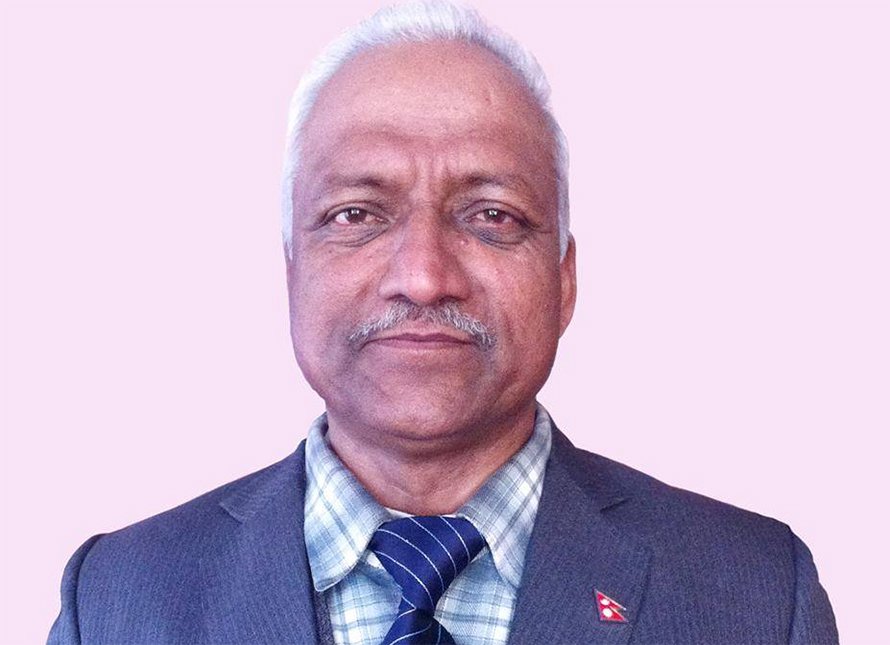
Kalauni from Sudurpaschim province once contested a parliamentary election against current Nepali Congress president Sher Bahadur Deuba in Dadeldhura. It is learned that Madan Bhandari, the late husband of President Bidya Devi Bhandari, had inspired Kalauni, who was also a teacher, to join politics in the early 1990s. However, he is still involved in education ‘business’ and currently owns a number of institutions in Kanchanpur. Before the merger between the CPN-UML and the CPN-Maoist Centre, Kalauni was the deputy chief of the UML’s central election commission.
7.
Sharmila Kumari Panta: Sudurpaschim

The identity of Panta, a resident of Chitwan district of Province 3, was restricted to her home till the early 2000s. When the Nepal Army soldiers in civvies arrested her husband, Gyanendra Tripathi, who was also a Maoist soldier, she came out and arrested the move. As Tripathi disappeared from the custody, Panta established an organisation of family members of the persons who have been disappeared during the war. The Pushpa Kamal Dahal-led government had appointed her as a member of the Nepal Airlines Corporation board of directors in 2008.





